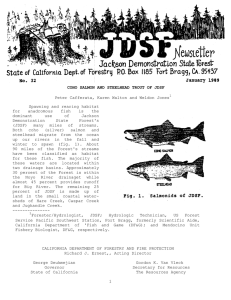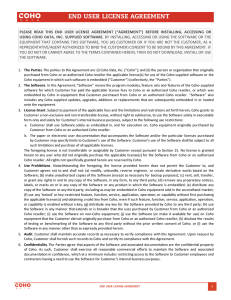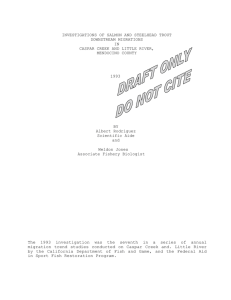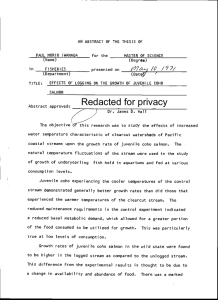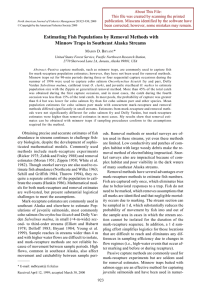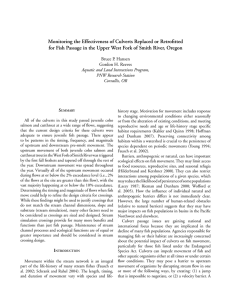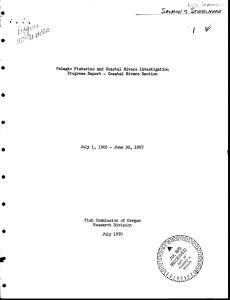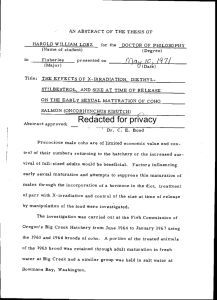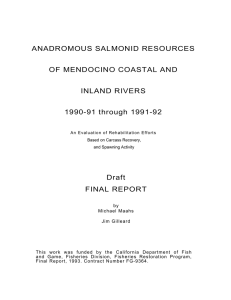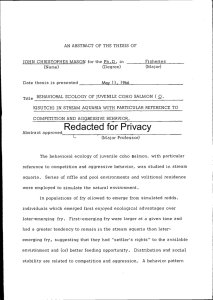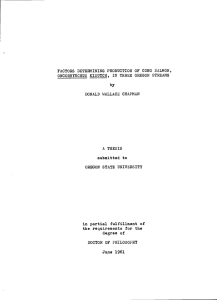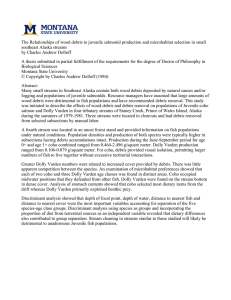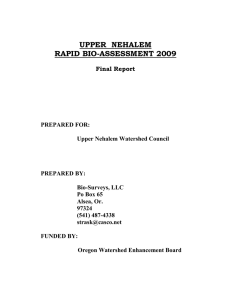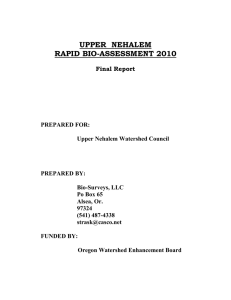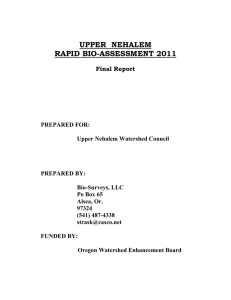A Fish in Stone (powerpoint)
advertisement
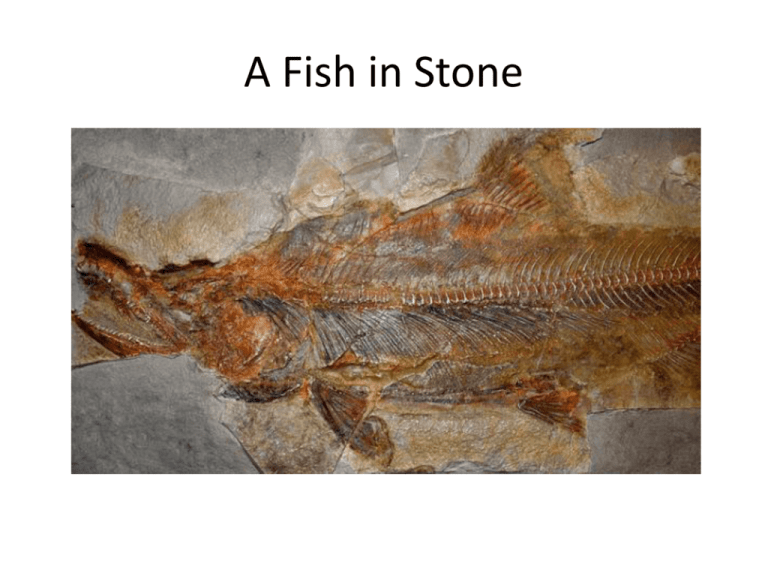
A Fish in Stone I have been in that stone for over a million years. What a journey to finally come out and tell my story. Excuse me, my name is Coho Salmon. I was fossilized over a million years ago when I got trapped in a mud layer during a large storm. I’m looking for my friends Chinook and Steelhead. We are distant cousins. Our ancestors have been on Earth for 40 million years. About 1 million years ago during the Ice Age, we were abundant in the cool rivers that flowed from the mountains in the east to the San Francisco Bay. We all belong to the salmonids, a group of fish that can live in fresh and salt water. This is a difficult task for any vertebrate, because of how bodies handle fluids and salt. Our body changes when we migrate from fresh water to marine. Some people cannot recognize the change. The salmonid body uses chemistry to get rid of salt when it moves to the ocean. They are able to “poop” it out. This helps to maintain a balance. When it returns to fresh water it can easily adjust. Salmonids are born in fresh water and live in the creek, river, or lake for about one to three years. They will then go to the ocean and spend another one to eight years before they return to the same stream. They are anadromous or migrating from salt to fresh water to spawn. In fresh water salmonids prefer clean, cold running streams with gravel bottoms. Warm water has too many dissolved chemicals and disturbs their life cycle. The body is equipped to get rid of salts, but not other toxins. “I have wanted to jump into the creek I was born in for a long time,” Coho exclaimed. Coho jumped into the river, but was surprised by the warm temperature and muddy bottom. The river is not flowing like it used to. He can barely swim in this creek. He looked around to find some other salmonids, but instead he saw these unknown creatures swimming. Coho met a native western pond turtle swimming near him. Coho asked about the fish. The turtle replied, “In 1873 the California government introduced warm water fish to California streams. Livingston Stone, a fishery expert transported fish by train from the east and midwest to the San Francisco Bay area lakes.” “Why would they do that?” Coho wondered. “As the population of the San Francisco Bay area increased in the 1800’s the forests were cut down and humans started to dam rivers for water supply. Streams and lakes suffered from pollution from saw mills, siltation, and log jams. The waters became warm and local native species could not live in the water anymore. The fish were brought in for a food source,” turtle replied. They introduced non-native fish including large and small mouth bass, bluegill, brown bullhead, black crappie, and sunfish They could survive in warm, slow moving waters that the humans had created. These fish were familiar to the people that moved from back east. The water also did not taste the same. Nitrates from too much fertilizer; phosphates from soap; and all kinds of paper and plastic bottles could be detected in the water. Copper, aluminum, iron, and phosphorus from storm runoff, caused algae blooms that depleted oxygen in the water. Humans developed a complicated system of pipes under the roadways called storm drains, to protect their homes from flooding. Storm drains can concentrate pollution from the surrounding watershed. Water pours into wetlands, unless there is a system to help clean the pollution, the toxins remain in the water. The fish are affected by the chemicals, as they filter water through their gills. The turtle told him of several “fish kills” when pollution from the land was carried by storm water. A plume of the toxins surrounded a school of largemouth bass and caused over 1000 fish to die. We still do not know what caused the kill, but their bodies were found along the shore. Luckily they were eaten by scavengers and only the remains of bones and scales were left. Nature can help clean up tragedies created by humans. It was a different world and Coho did not know if he could survive. He started to realize that maybe he should have stayed in the stone. Coho slowly moved back to his stone and laid down, to have a place forever in history that would tell the story of a land that once was, but would never be again. funding provided by Alameda County Sheriff's Department





